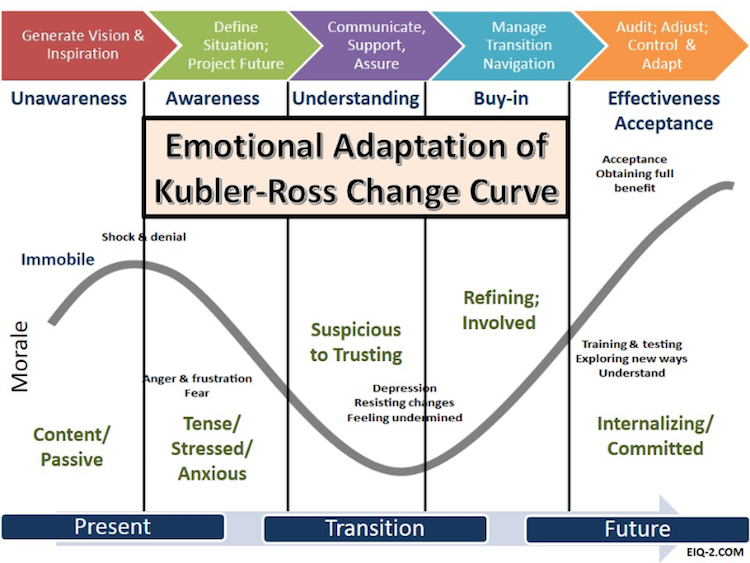Some of your institution’s most important financial decisions have yet to be made.
Among them? Which education technology software tool to invest in for the new year.
Trying to decide on a technology tool can sometimes feel us leaving confused, overwhelmed, and stuck, like Alice trying to navigate Wonderland.
That’s because truly understanding each educational technology software platform can take some time.
I was reminded of just how overwhelming the search for a tool can seem when I spoke on a panel for Dr. Josie Alhquist’s course EDH5309: Technology in Higher Education at Florida State University.
Specifically, I was reminded of how little time student affairs professionals have to take on new projects…like compiling information to find a software that is the best fit for their campus.
There are a lot of tasks that student affairs professionals find themselves bouncing between:
- Managing employees & student workers
- Tracking paper documents
- Updating spreadsheets
- Organizing and planning programs and meetings
- Intranet or internal website
- Messaging apps
- Putting out fires throughout the day
… Just to name a few. ?
I can see how ed tech decisions could get buried under the rush of daily responsibilities.

The key to making the search for a software solution headache-free is to identify companies that share your institution’s values and goals, rather than making a decision based on a brand name.
Too often schools throw a software at their co-workers or students to see what sticks. And if an institution has already tried a few different softwares, decision fatigue comes into play.
That’s why I’ve laid out a surefire checklist of considerations as you begin your journey to find the best software for your student affairs department and students.
Introducing software to your student affairs team
Before everything else, the first step is to consider your team, and how people will be impacted by the onboarding software process.
Most of us don’t hold degrees in change management. That doesn’t mean we can’t start to be experts of change and understand how to best prepare for it when it comes knocking at our door.
Why do we as humans tend to react negatively to change?
We’re ultimately afraid that a process is going to be changed for the worse. Or maybe we created the process ourselves and see it as “our baby.” These types of changes can be met with some major pushback in the workplace.
Often, changes are made with people in mind, but those people aren’t always consulted.
When we anticipate significant shifts in how we do our work, as leaders, we need to ensure that everyone is equipped to deal with those changes. We also need to think about how to best inform our teams about upcoming changes.
At Presence, we utilize the Kubler-Ross Change model as a reference when we think about a change in any environment:

The Kubler-Ross model is better known as the five stages of grief and was first introduced in Death and Dying by Elisabeth Kubler-Ross. When adapted for the workplace, we see how the grief cycle applies to other changes in our lives as well — not just death. What this shows is a linear process of change, however, it is natural to go back and forth between stages of change.
Using this model can be helpful in creating buy-in with staff to help them contextualized what they’ve gone through in past changes. People immediately can get a better sense of their reactions and more thoughtfully work through their emotions around change.
Company culture and values
The company you work with can also help navigate the on-boarding process alongside you, cheering for you every step of the way.

It’s helpful to know if a company can empathize and embrace a student affairs perspective. One way to understand if you have a shared lens is to evaluate an overlap in values.
Compatibility of values is an important consideration on multiple fronts. Do your best to understand the vendor’s company culture and values by doing some research on social media, Google, and ask for positive references from institutions similar to yours. Even if the solution itself is amazing, developing a positive, values-based working relationship is critical if your team needs to reach out and ask for help in the future.
For instance, here at Presence we chat a lot about why inclusion matters in technology, and aim to build a software inclusive of end-user identities. We realize the need to provide resources for institutions who often confuse race/ethnicity and gender/sex in data uploads generated from student information systems (SIS). We even went as far as presenting at a NASPA National Conference to highlight the need for more inclusive data among all institutions. The lack of diversity in the technology field can create a narrow vision of the needs of marginalized end-users, and software needs to be built with various backgrounds and abilities in mind.
Understanding the company’s core values and experiences can help you understand how their product best serves students.
For example, are the developers (people who create the software from the ground up) well versed in the higher education industry? This question may be harder to answer, but if the developers aren’t experienced in your industry, they may not truly understand what type of features or functionality you need in a software.
Customer support and training
Learning can never be a one-size-fits-all approach, and in today’s environment, there needs to be a training structure that is inclusive of everyone from admins to end-users. If the software is intuitive to begin with, you shouldn’t need too much training.
Figuring out how to use your new software without too much of a hassle is key, and if you do experience any issues, the customer support experience should be worry-free. Here are some questions to consider in evaluating on-boarding and customer support:
- Is it the software user-friendly to start?
- Does the company provide access to ongoing support after on-boarding?
- How long might it take for someone who isn’t tech-savvy to feel comfortable with the software?
- How quickly does the customer support team respond to critical issues?
During the RFP process, many companies offer free demonstrations of a software product (if they don’t, that’s a red flag!), so you can see firsthand how you’ll be interacting with and utilizing the software.
And once you’re onboard, a great customer support team will be proactive and offer personalized tips to help you be successful with the software – before you even know you need those tips.

Here at Presence, we aim to collaborate with campus partners and gain a solid understanding of their wants and needs. We compile feedback with our Happiness Team and use it to build out future features, like with our newly launched Forms feature.
Asking a software provider about the plans for and the process of developing new features can help determine if the software will be a future success as their technology continues to develop
Software features and accessibility
When looking at features and software, you should answer the question, “How will this software solution empower both our staff and students?”
According to Ed Tech Magazine, prospective students are factoring in the institution’s technology into their admissions decisions. It all comes down to engagement and involvement – “Does the institution’s technology help me be better connected with my campus and the world around me?”
With that being said, it’s easy to get distracted by extra bells and whistles of a software. Be focused and proactive by writing down a list of your current pain points and how a potential software could help eliminate those.
For example, if one of your pain points is that the process for planning programs is clunky, ask yourself if the software:
- Lessens the workload for your student affairs team?
- Cuts down on paper processes in the office?
- Encourages cross-collaboration and resource-sharing?
Additionally, you want to feel comfortable knowing that your end-users (students and staff) feel comfortable utilizing the software day-in and day-out. Everyone should be able to use the software — and that includes ensuring that the technology is usable by people with vision and hearing difficulties. This is more widely known as a Voluntary Product Product Accessibility Template or VPAT, which communicates to a potential user that the software company is in compliance with specific accessibility standards.
Around 7 -10% of people in the United States have a disability that requires them to use accessible websites.
That’s a huge population of potential students and staff who could be prevented from using software if it’s not built with specific accessibility considerations in mind.
Price versus value
This is it. The final question for your checklist: Is the software worth it?
Time is a limited resource and understanding how you can save staff time in the long-run with a software solution company is imperative. There is power in identifying your team’s strengths and relying upon tools to help you accomplish the rest. You might be a superhero, but you don’t need to do everything all by yourself.
Simply put: Will a software give you back more of your precious time and resources? And with harrowing budget cuts across the higher education industry, the right software can help you understand how to utilize your budget more effectively for the long haul.
And as our Director of Campus Development, Andy Gould, says,
“Anything you purchase should always be a long-term investment.”
What does your checklist look like when it comes to on-boarding an ed tech software? Tweet us @themoderncampus.





